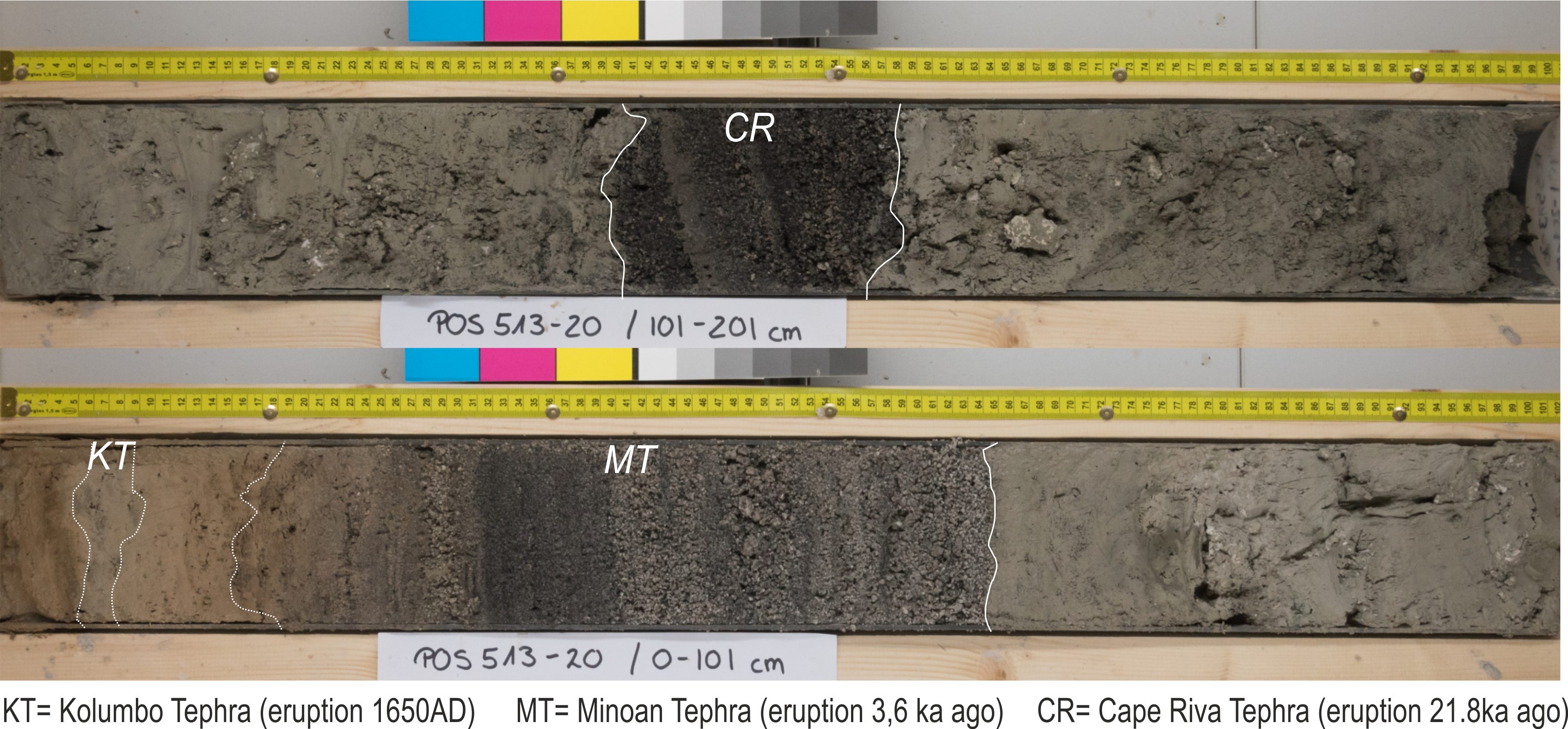
Hellenic Arc Volcanic Field
About 3,650 years ago, the Greek island of Santorini exploded in a huge volcanic eruption. This eruption was so large that it buried a town on Santorini and may have impacted the Minoan civilization on the island of Crete, 80 miles to the south. There have been more than 100 volcanic eruptions in this area over the past 360,000 years.
Scientists on IODP Expedition 398 will drill into sediments around and on top of the volcanic system that’s deep under the seafloor beneath Santorini and the nearby Christiana and Kolumbo volcanoes. They are hoping to answer how and why these volcanoes erupt and to reconstruct the history of volcanism in this area. These answers could help us better understand other explosive volcanoes around the world that are a threat to the millions of people who live near them.

What will we learn?

The Hellenic Volcanic Arc has many geologic mysteries waiting to be solved. Scientists aboard Expedition 398 will try to:
- Better understand links between the movement of the Earth’s crust and activity of volcanoes in the region. Expedition scientists want to know whether fault movements or earthquakes triggered eruptions here in the past
- Improve our understanding of the famous Late Bronze Age eruption of Santorini and our ability to predict future hazardous underwater eruptions in the area.
- Reconstruct as much of the eruptive history of the area around Santorini as possible. This includes the Santorini volcano and the nearby Christiana and Kolumbo volcanoes.
- Study the slow sinking of the Aegean basin over time, recording a transition from continental to marine environments.
- Look for evidence of microbial life buried deep inside the Santorini caldera.
How will we know?

To answer these questions, expedition scientists will be drilling holes into the seafloor to pull up long thin tubes of rock, mud, and silt called cores. Scientists on the ship will be looking in the 6 cm (2 in) wide sediment cores for layers of volcanic matter, called tephra, erupted by volcanoes in the volcanic group over at least the past 3 million years. These layers form as volcanic matter rains down out of the sky and settles to the seafloor following an eruption, preserving a fascinating geologic history of volcanic eruptions over time.
Once the cores are pulled up onto the ship they will be sliced in half so the scientists can clearly see the different layers of sediment and tephra. In the JOIDES Resolution’s extensive laboratories they will describe and analyze each core, using many different techniques to identify the tephra layers erupted by nearby volcanoes.
Back on shore, scientists will work in their laboratories to study the cores in ways they couldn’t on the ship. They will observe the tephra particles under a microscope to identify the types of minerals in them. They will also use special instruments to analyze the chemical compositions of the tephra layers. This information can tell them where the magma came from in the earth and what might have happened to it on its way to the surface. It can also tell them how long ago the magma erupted from the volcano. This information will help the scientists put together a timeline of eruptions for each of the three volcanoes they are studying—Santorini, Christiana, and Kolumbo.

* * *
Expedition 398 will Reach the World! Click the link to watch videos, read field notes and journal entries, and immerse yourself and your students in the science of #EXP398.




